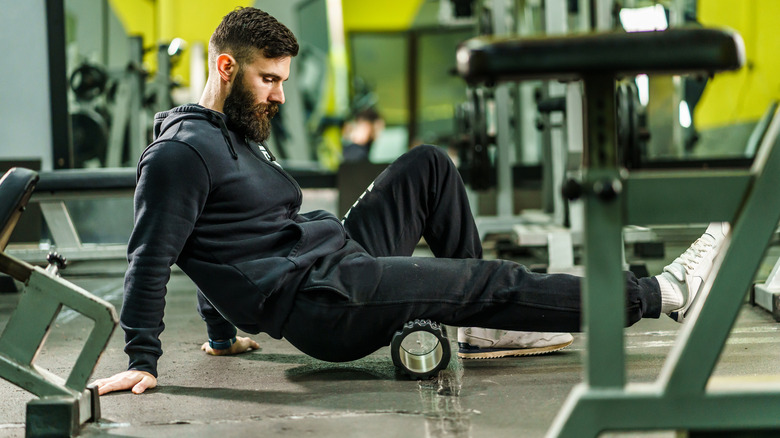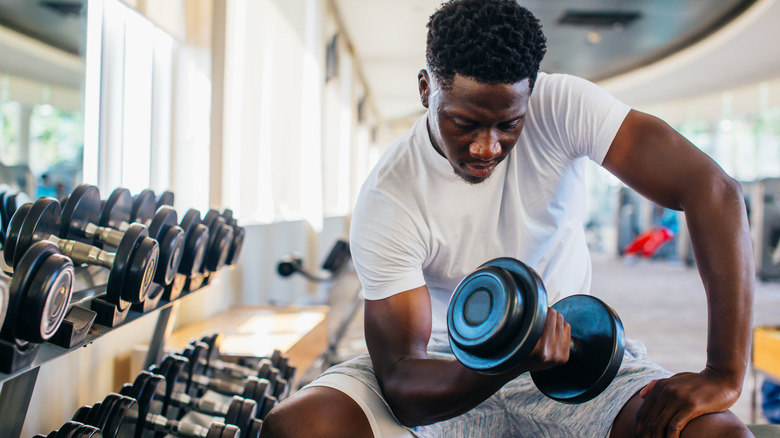What Causes Delayed Onset Muscle Soreness?
It's not unusual to experience soreness in your muscles during or after a workout. According to Healthline, the burning sensation you feel while working out is called acute muscle soreness. The soreness you experience a day or two after working out is known as delayed onset muscle soreness (DOMS). While either of these effects can be painful, Livestrong suggests they're two different types of soreness with separate, distinct causes.
Acute muscle soreness is caused by an increase in lactic acid, a byproduct of intense exercise. "When you exercise very intense, your muscles can't get all the oxygen needed to break down glucose for energy quick enough, so lactic acid accumulates in muscles and spills over into the bloodstream," Allen Conrad, a certified strength and conditioning specialist, told Livestrong. This reaction causes an intense burn, and the harder you work out, the more of a burn you feel. While it's uncomfortable, it's generally nothing to worry about. DOMS, on the other hand, is caused by a specific type of movement and can indicate positive fitness outcomes.
Delayed onset muscle soreness may lead to muscle strength
Depending on your fitness level, delayed onset muscle soreness (DOMS) can be downright uncomfortable because it makes simple tasks such as walking difficult. This kind of soreness is believed to be caused by tiny tears in your muscle tissue. As the muscles repair, they often get stronger. That being said, you do not always have to experience DOMS to see results in muscle size or strength, according to the American College of Sports Medicine.
Common exercises that can cause DOMS include lifting weights, jogging, walking downhill, and step aerobics (via American College of Sports Medicine). These exercises are called eccentric actions, or the simultaneous lengthening of a muscle concurrent with applied force. For example, when performing a bicep curl with a dumbbell, the lowering down of the weight is considered an eccentric action. To alleviate DOMS, an ice pack application, massage, or acupressure may provide relief.


